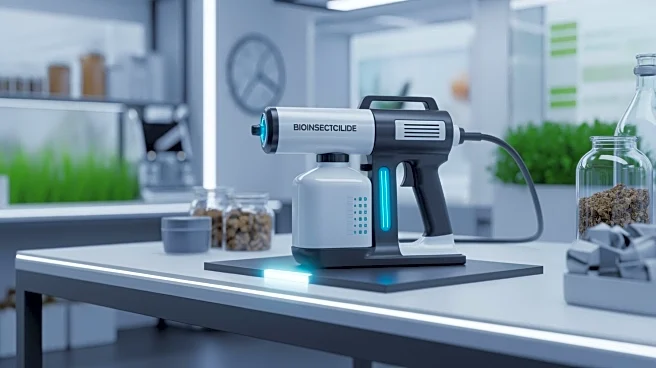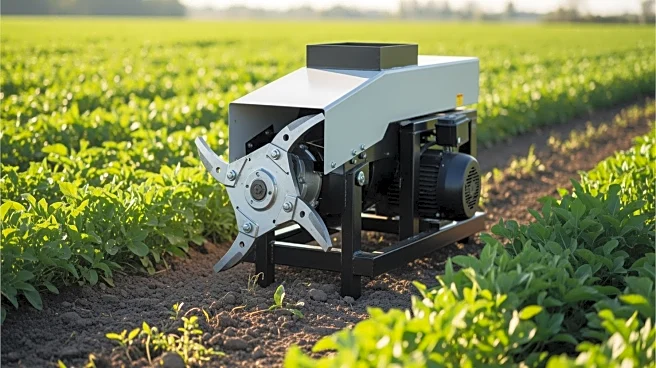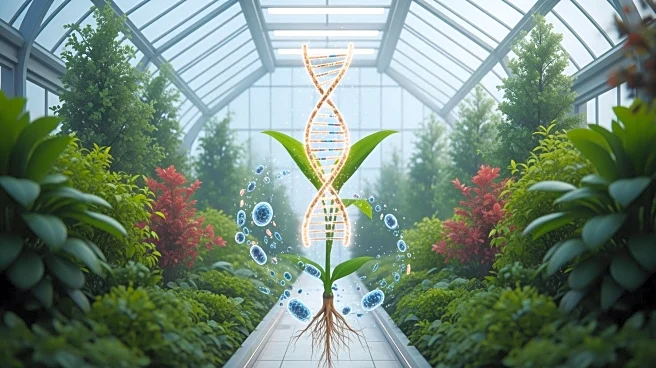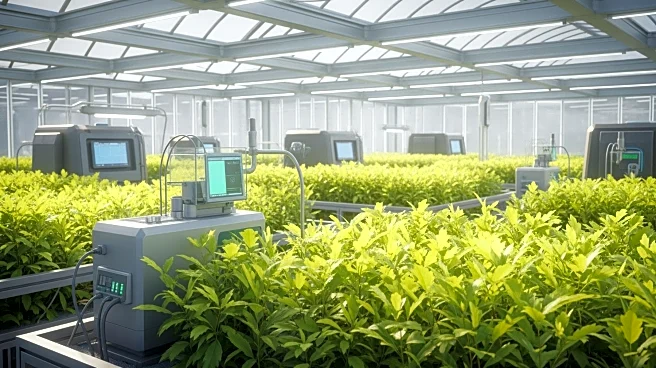What's Happening?
The agricultural microbials market is anticipated to grow significantly, reaching USD 14.30 billion by 2030, according to a report by Mordor Intelligence. This growth is driven by a global shift towards
sustainable and biological farming solutions, with an estimated compound annual growth rate (CAGR) of 13.8% from 2025 to 2030. Factors contributing to this trend include increased awareness of soil health, rising fertilizer prices, and consumer preference for residue-free and organic food. Farmers are increasingly adopting microbial-based fertilizers, pesticides, and biostimulants to enhance nutrient uptake, boost yields, and restore soil biodiversity, reducing reliance on synthetic chemicals. Technological advancements, such as AI-powered strain discovery and synthetic biology, are further accelerating the adoption of these solutions across both developed and emerging markets.
Why It's Important?
The expansion of the agricultural microbials market is significant for several reasons. It reflects a broader movement towards sustainable agriculture, which is crucial for addressing environmental concerns and ensuring food safety. The demand for chemical-free produce is rising globally, with major food retailers and export markets requiring compliance with zero-residue standards. This shift is encouraging farmers to integrate microbial pest management and biofertilizer solutions, expanding market share in key exporting countries. Additionally, government initiatives and subsidies are supporting the adoption of microbial products, particularly in regions like Asia-Pacific and Europe. These developments are poised to redefine agricultural practices, promoting regenerative agriculture and enhancing soil health, which are essential for long-term sustainability and productivity.
What's Next?
Looking ahead, the agricultural microbials market is expected to continue its growth trajectory, supported by technological innovations and government policies. AI and machine learning models are revolutionizing microbial product discovery and optimization, predicting strain performance based on soil and crop data. Governments worldwide are implementing programs to reduce the cost burden of microbial adoption, with subsidies and tax incentives promoting local biofertilizer manufacturing. As these technologies and policies advance, the market is likely to see increased consolidation, with major agritech and agrochemical companies expanding their biological portfolios through mergers, acquisitions, and strategic partnerships. This will further enhance microbial R&D and global distribution, reinforcing the market's long-term confidence.
Beyond the Headlines
The rise of the agricultural microbials market also highlights ethical and environmental dimensions. The transition to biological farming solutions aligns with global sustainability goals, reducing the environmental impact of agriculture and promoting biodiversity. As multinational food companies commit to sourcing from farms that improve soil carbon content, microbial products are validated as essential tools for sustainable farming systems. This shift not only supports climate-smart agriculture but also fosters a more resilient and profitable agricultural ecosystem. The integration of precision-farming tools and bio-based innovations will enable tailored solutions for every soil and crop, unlocking higher productivity with lower environmental impact.











